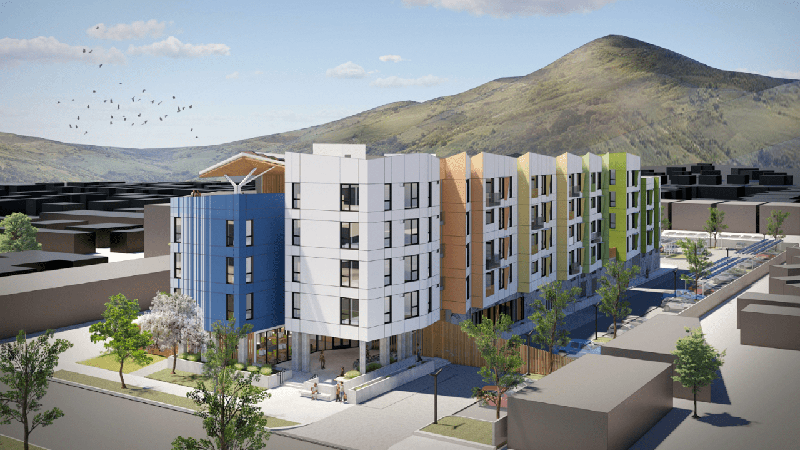Delays in housing creation attributed to rising construction costs, labor shortages.

The Magnolias Affordable Housing Project in Morgan Hill is one of a small number of projects that have been approved. It is projected to be completed in 2024, eight years after the passage of Measure A. Courtesy SERA Design
To date, Santa Clara County has committed more than 80 percent of the funding generated by a nearly $1 billion housing measure passed by voters in 2016. But six years after passage of Measure A, less than half of that money has been spent on building new housing.
Measure A, which voters marginally approved by the required two-thirds majority, promised to create 4,800 units of new affordable homes over 10 years, much of which is meant to shelter half of the estimated 10,000 unhoused county residents.
The aim is to provide both transitory and permanent housing for members of vulnerable populations, including veterans and seniors, disabled individuals, and those from low and moderate income households. The affordable housing plan also targets foster youth and victims of abuse, according to Measure A ballot language.
At a meeting of the ad-hoc Measure A Bond Oversight Committee, Brianna Pierce, an accounting consultant retained by the county, explained that only 44.84% of the allocated money had been spent.
“As of March [2022], the program has committed $772.95 million, 81% of the available allowable bond proceeds, but has only spent $426 million,” Pierce said.
Pierce acknowledged that there has been a troubling delay in delivering those units, nearly six years after the measure’s passage. She said the committee has been talking about the potential for delay “since the beginning.”
‘You can’t build affordable housing in market conditions. It’s impossible.’
Larry Stone, County Assessor, Chair, Bond Oversight Committee
“There [was] concern that there could be potential increases in cost of construction and labor shortages,” she said.
Vanished Optimism
In a November 2021 interview with Stanford University’s Peninsula Press, San Jose Mayor Sam Liccardo, who was one of Measure A’s enthusiastic sponsors, said skyrocketing construction costs had virtually stalled efforts.
“We’re having huge challenges in getting projects [that the city has] approved actually under construction.” he said. “Challenges are primarily due to funding.”
Santa Clara County Assessor Larry Stone, who chairs the bond oversight committee, said the slow construction rate is a serious concern.
“We talk about it in every meeting,” Stone told San José Spotlight, striking a pessimistic note. “You can’t build affordable housing in market conditions,” he said. “It’s impossible.”
Although rising costs and labor shortages have stymied actual construction, the county has been steadily expanding its commitment to earmark funds for affordable housing.
In November 2016, Alameda County and Los Angeles County voters passed similar initiatives similar to Santa Clara County’s Measure A. Together, the three counties borrowed a total of $2.73 billion to tackle rampant homelessness and boost the affordable housing stock.
Despite Santa Clara County’s slow progress in actual building, it has far surpassed Los Angeles and Alameda counties in committing funds. Less than half of authorized bonds in Los Angeles and Alameda County have even been sold, Bloomberg News reported in April.